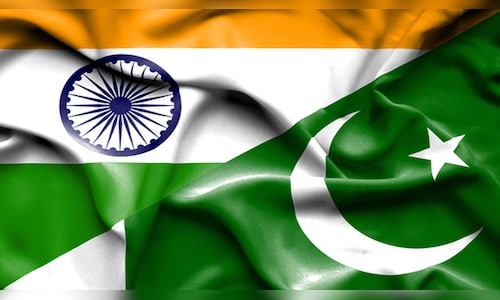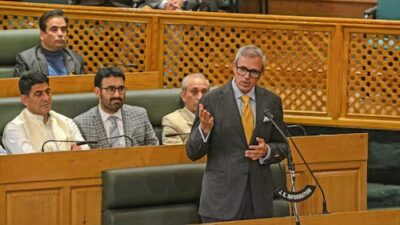The government has kicked off a multi-faceted initiative aimed at halting the flow of the Indus River’s waters into Pakistan after the tragic Pahalgam terror attack, which claimed the lives of 26 Indian nationals and was executed by terrorists linked to Pakistan.
This announcement carries clear political, strategic, and infrastructural implications as India reshapes its response to terrorism through resource control.
What the Indus Waters Treaty meant for Pakistan
On April 24, 2025, India officially notified Pakistan that the Indus Waters Treaty would be held in “abeyance,” effectively ceasing all treaty-related obligations between the two countries.
This suspension includes halting data exchanges, meetings between designated Indus Commissioners, and advance notifications for any new developments in the basin. The notification came just one day after India publicly declared its intention to pause the decades-old agreement.
The communication was made by Water Resources Secretary Debashree Mukherjee, who emphasized that ongoing terror activities originating across the border undermine India’s rights under the water-sharing arrangement.
In a correspondence to her Pakistani counterpart, Syed Ali Murtaza, she wrote: “The commitment to honour a treaty in good faith is fundamental. However, what we observe instead is a continuous pattern of cross-border terrorism by Pakistan targeting the Indian Union Territory of Jammu and Kashmir.”
Also Read: Pahalgam terror attack: Who is Nazakat Ahmad Shah, the guardian angel for 11 tourists
The 1960 treaty, facilitated by the World Bank, was established to equitably share the waters of the Indus River and its six tributaries between both nations.
According to this arrangement, the waters from the eastern rivers—Ravi, Sutlej, and Beas—were allocated to India, while Pakistan was granted rights to the western rivers—Indus, Jhelum, and Chenab.
Historically, Pakistan has received approximately 135 million acre-feet (MAF) of water annually under this allocation—nearly 70 percent of the total flow of the Indus system.
What is India’s three-phase action plan to stop water flow?
A significant step following the treaty’s suspension is the Indian government’s announcement of a comprehensive three-phase plan—short-term, mid-term, and long-term—to operationalize this decision and restrict the river’s waters flowing into Pakistan.
This plan was formalized in a high-level meeting at Union Home Minister Amit Shah’s residence, involving key stakeholders including Jal Shakti Minister CR Patil.
During the discussions, Patil reportedly stated: “We will ensure that no drop of water flows from India to Pakistan.”
The short-term measures focus on administrative enforcement actions. These include heightened anti-terror operations in Jammu and Kashmir, the removal of Pakistani nationals in the country, and the cancellation of all Pakistani visas except for Long Term Visas (LTVs) issued to persecuted Pakistani Hindus.
In conjunction with this announcement, Shah reached out to chief ministers of Indian states to begin the process of identifying and deporting Pakistani nationals. All Pakistani citizens living in India have been given a 72-hour ultimatum to leave, expiring on April 26.
On the infrastructure front, the mid-term and long-term strategies will center on enhancing India’s ability to retain, divert, and repurpose water that otherwise would have flowed to Pakistan.
Government sources have confirmed that plans for actions such as desilting existing dams, constructing new storage reservoirs, and redirecting river flows are being developed to maximize water retention.
The government also aims to expedite several hydroelectric projects in Jammu and Kashmir that previously encountered objections from Pakistan under the IWT’s consultative procedures.
The suspension of the treaty now permits India to move forward with these initiatives without the requirement to notify or gain clearance from Pakistan, eliminating a significant procedural obstacle.
How India plans to deal with World Bank
Considering the international aspect of the IWT, which involves the World Bank as a guarantor, there are concerns about potential legal consequences. However, Indian officials maintain that the decision is legally sound given the context of ongoing cross-border hostilities.
Sources familiar with the situation have confirmed that the government is prepared to address any legal challenges that may arise, including those initiated through international channels such as the World Bank or United Nations.
“Even if Pakistan chooses to approach the World Bank, India has primed its counter-response,” News18 quoted a source as stating.
Meanwhile, another significant development is the cessation of hydrological data sharing, which has been essential for Pakistan’s flood and drought management strategies.
With this information flow interrupted, Pakistan might struggle significantly to predict seasonal water availability. Additionally, India is poised to enhance its electricity generation in Jammu and Kashmir by fully utilizing its potential under the eastern rivers—an area that had previously remained underutilized due to treaty restrictions.
These measures are being implemented with assurances that domestic water users in India will not experience any disruptions due to the new water management strategy.
How Indian politicians have defended the move
The decision to suspend the IWT has sparked reactions across the political landscape. Former Jammu and Kashmir Chief Minister Omar Abdullah voiced his long-standing dissatisfaction with the treaty, claiming it has negatively affected the region.
“The Government of India has taken certain actions. Regarding Jammu and Kashmir, let’s face it, we have never supported the Indus Water Treaty,” Abdullah told reporters.
“The medium to long-term implications of this are yet to be seen,” he added.
“We have consistently believed that the IWT is one of the most unjust documents for its people.”
The BJP, on the other hand, released a video showcasing the impact of the decision on Pakistan, underscoring the reliance of its agricultural sector on Indus waters. The video reiterated Prime Minister Narendra Modi’s well-known statement: “Blood and water cannot flow together.”
The party asserts that this action aligns with Modi’s position since 2016 when he first made the statement following the Uri attack. While India chose not to suspend the treaty after the Pulwama attack, the Pahalgam incident appears to have ushered in a decisive policy shift.
The BJP’s campaign also highlighted the disparity in water distribution between the two nations, noting that 80 percent of Pakistan’s agriculture relies on the Indus system, while India only receives one third of the total basin water.
This suggests that India has both moral and strategic grounds to reassess the treaty in light of new security circumstances.
How Pakistan has responded to the move
Pakistan has rejected India’s suspension of the IWT, warning that any disruption to its allocated water supply will be regarded as a hostile act.
Officials in Islamabad have characterized the action as an “act of war,” emphasizing the crucial role of the Indus River in their national agriculture and daily water consumption for over 240 million citizens.
The Indus Waters Treaty has been recognized as one of the most resilient international water-sharing agreements in contemporary history.
Having endured multiple wars and diplomatic strains over six decades, it now faces its gravest disruption to date.
While India’s actions may result in geopolitical consequences, New Delhi remains steadfast in its position that the treaty cannot be upheld when the underlying principles of peace and cooperation are repeatedly violated.
Also Read: Put myself in father’s shoes to rescue my mother, says Pahalgam terror attack survivor



